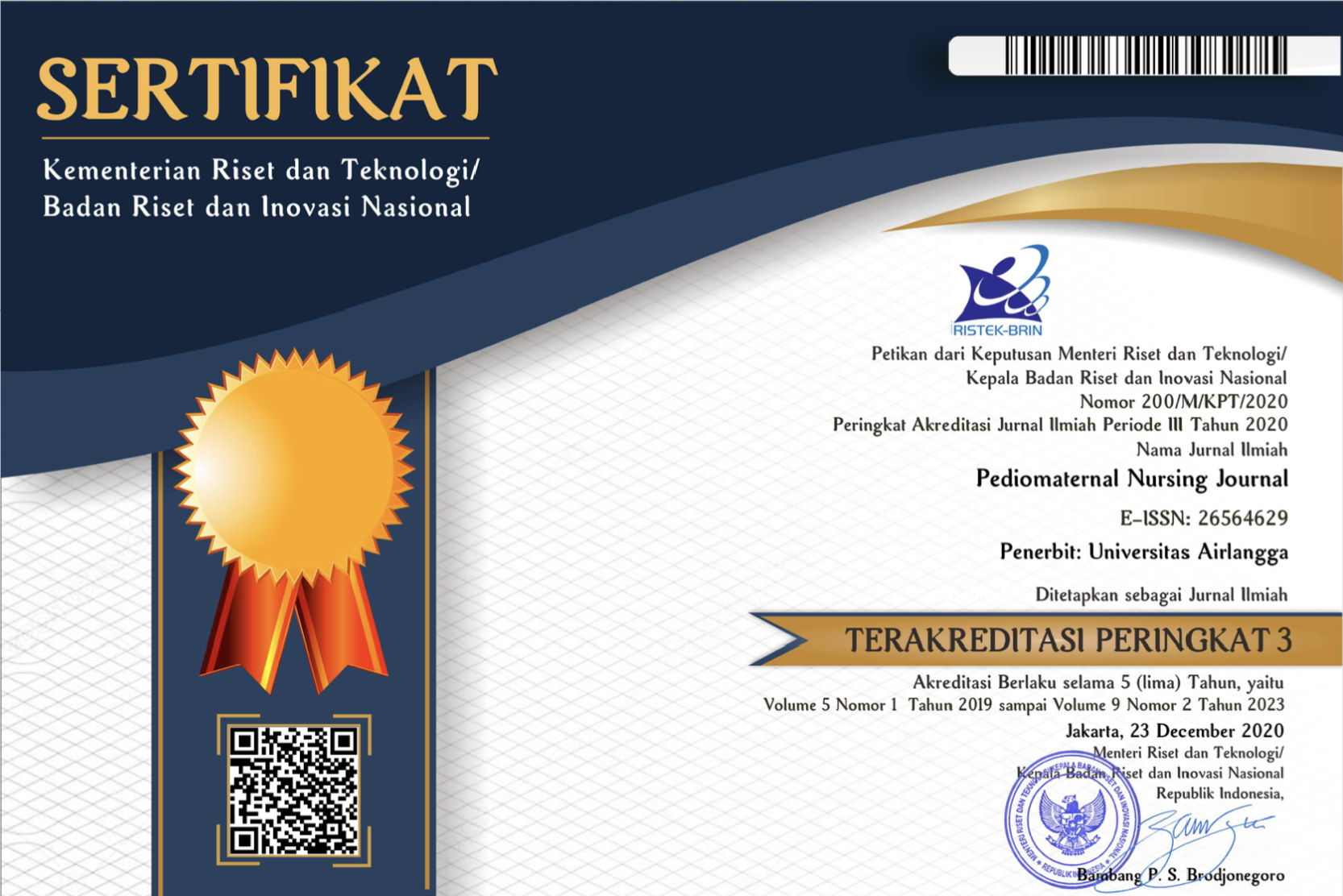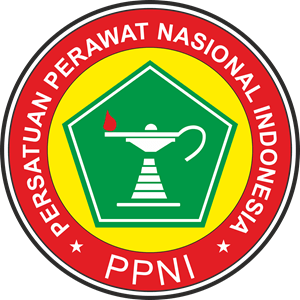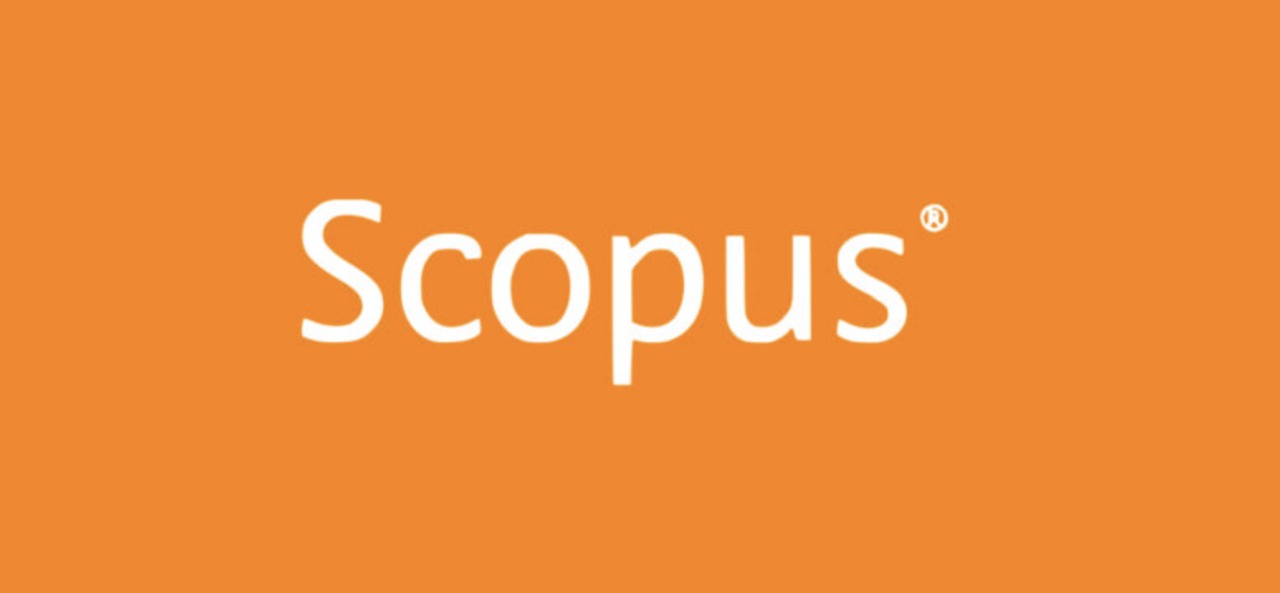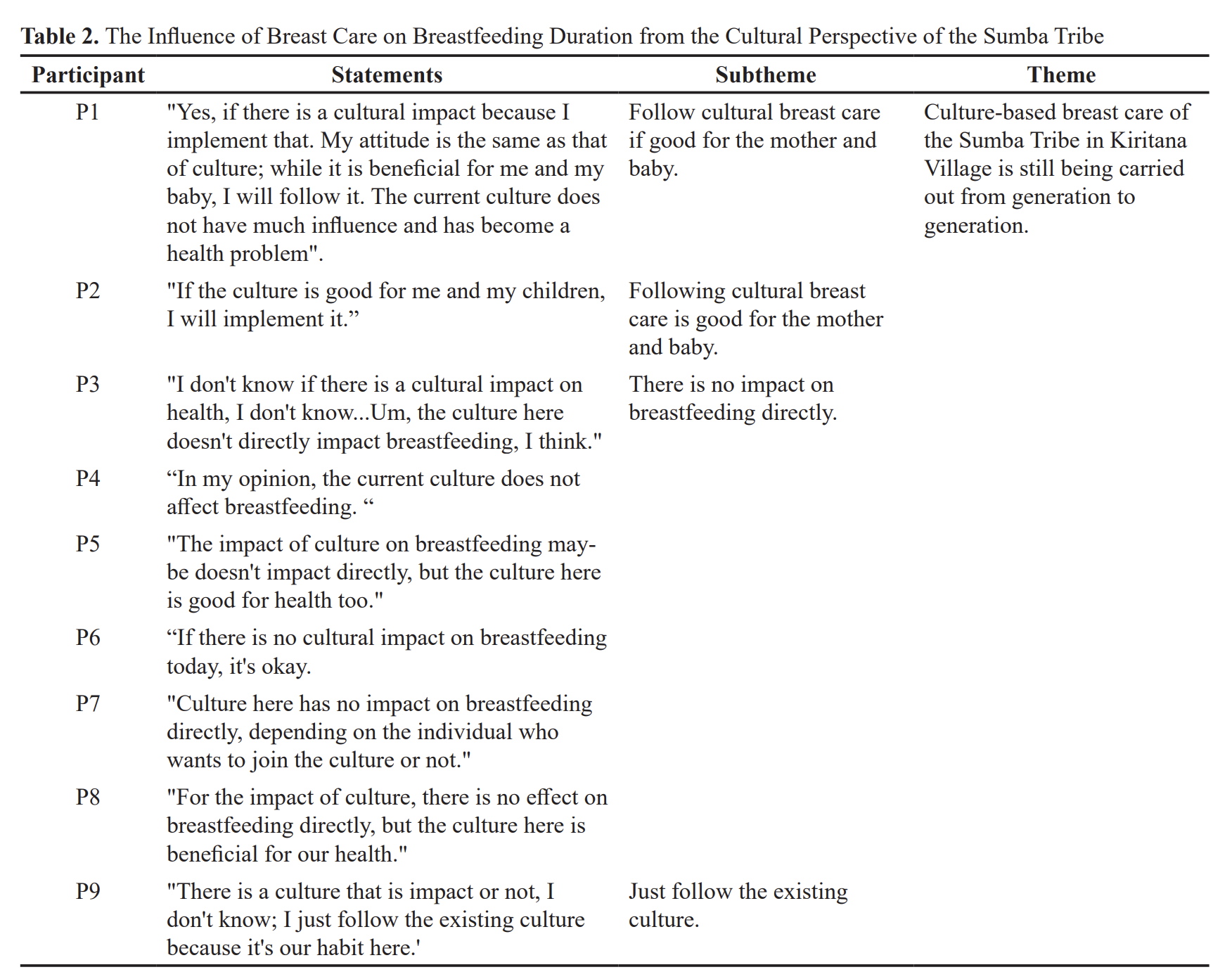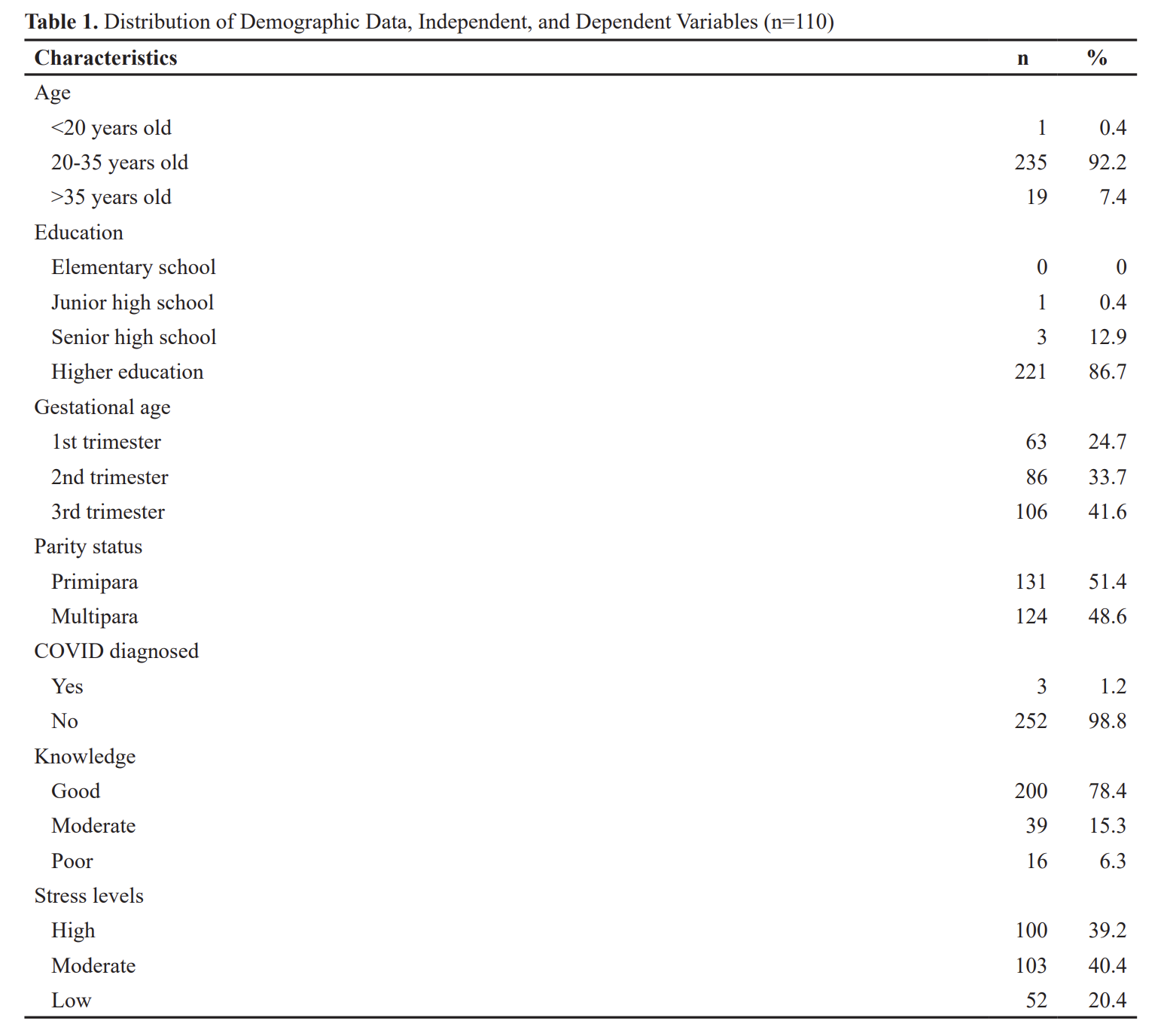Guideline for Authors
SUBMISSION PREPARATION CHECKLIST
As part of the submission process, authors are required to check off their submission's compliance with all of the following items, and submissions may be returned to authors that do not adhere to these guidelines.
- The article is original, not submitted to other journals or under a peer-review process.
- Read and follow the journal policies.
- The entire full text and other submission files should be in English.
- Submit the files in Microsoft Word, or RTF document file format. We are not accepted in PDF file format.
- Full-length articles and title pages should be uploaded in different files. Make sure no author(s).
- Make sure the correct layout: one-column, double space, A4 with appropriate margins (Top: 2.54 cm, Bottom: 2.54 cm, Left: 2.54 cm, and Right: 2.54 cm), Arial, and font 12).
- All illustrations, figures, and tables are placed at the end of the full-length article.
- Following the reference guidelines.
MANUSCRIPT PREPARATION
Please choose an article type before the submission. During the submission, PMNJ required the author(s) to submit (1) the title page and (2) the manuscript into a different file. The author (s) must submit the files in Microsoft Word file format. PMNJ has provided the template for each required document.
TITLE PAGE FILE:
All the information about the authors should be presented in this file. This should include the title of the manuscript, author's name, author's order, and corresponding detailed information including address of affiliation, phone, email, and postal code.
A Microsoft Word file to help you is available. [DOWNLOAD HERE]
ARTICLE TYPE
PMNJ is accept many types of articles to help authors disseminate up-to-date information for nursing. PMNJ is processing original articles, review articles, case studies, editorials, and perspectives. Please delete all author information in this part. The Microsoft Word file to help you is available for each article type.
Original Article – up to 7000 words
The original article consists of a quantitative study, qualitative study, mixed-method study, randomized control trials, and meta-analysis.
Quantitative study: In the abstract section, please used structured abstract (background, objective, methods, results, and conclusion). The abstract should no more than 250 words. Provide between 3 and 5 keywords and should be referring to https://meshb.nlm.nih.gov/search. Moreover, in the main text article, please follow the headings: Introduction, materials and methods (design, sample and setting, variable, instruments, intervention, data collection, data analysis, and ethical consideration), results, discussion, conclusions, declaration of interest, acknowledgment, funding, data availability, and references. Tables and figures can be inserted within the text or at the end of references. Please follow the reporting guidelines for specific study design.
A Microsoft Word file to help you is available. [DOWNLOAD HERE]
Qualitative study. In the abstract section, please used structured abstract (background, objective, methods, results, and conclusion). The abstract should no more than 250 words. Provide between 3 and 5 keywords and should be referring to https://meshb.nlm.nih.gov/search. Moreover, in the main text article, please follow the headings: Introduction, materials and methods (design, ethical consideration, participants and setting, data collection, data analysis, and trustworthiness), results, discussion, conclusions, declaration of interest, acknowledgment, funding, data availability, and references. Tables and figures can be inserted within the text or at the end of references. Please follow the reporting guidelines for specific study design.
A Microsoft Word file to help you is available. [DOWNLOAD HERE]
Mixed-method study. In the abstract section, please used structured abstract (background, objective, methods, results, and conclusion). The abstract should no more than 250 words. Provide between 3 and 5 keywords and should be referring to https://meshb.nlm.nih.gov/search. Moreover, in the main text article, please follow the headings: Introduction, materials and methods (design, participants and Setting, data collection, data analysis, trustworthiness, and ethical consideration), results, discussion, conclusions, declaration of interest, acknowledgment, funding, data availability, and references. Tables and figures can be inserted within the text or at the end of references. Please follow the reporting guidelines for specific study design.
A Microsoft Word file to help you is available. [DOWNLOAD HERE]
Randomized control trials. "Biomedical or health-related research in humans that follow a defined methodology" are what are referred to as clinical trials. This concept includes observational, preventative, quality of life, diagnostic, and screening trials in addition to intervention research (www.clinicaltrials.gov). Any clinical study must be registered in one of the five public trials registries that the ICMJE has approved (i.e.,www.clinicaltrials.gov, www.isrctn.org, www.umin.ac.jp, www.trialregister.nl). At the conclusion of the abstract, kindly note the research ID number and the website where the clinical trial is registered.
In the abstract section, please used structured abstract (background, objective, methods, results, and conclusion). The abstract should no more than 250 words. Provide between 3 and 5 keywords and should be referring to https://meshb.nlm.nih.gov/search. Moreover, in the main text article, please follow the headings: Introduction, materials and methods (design, sample and setting, variable, instruments, intervention, data collection, data analysis, and ethical consideration), results, discussion, conclusions, declaration of interest, acknowledgment, funding, data availability, and references. Tables and figures can be inserted within the text or at the end of references. Please follow the reporting guidelines for specific study design.
A Microsoft Word file to help you is available. [DOWNLOAD HERE]
Meta-analysis study. "If the results of the individual studies are combined to produce an overall statistic, this is usually called a meta-analysis. Many Cochrane Reviews measure benefits and harms by collecting data from more than one trial, and combining them to generate an average result. This aims to provide a more precise estimate of the effects of an intervention and to reduce uncertainty” (https://www.cochranelibrary.com/about/about-cochrane-reviews). A meta-analysis should be registered in Prospero or OSF. The number of registration should be mentioned in the method sections.
In the abstract section, please used structured abstract (background, objective, methods, results, and conclusion). The abstract should no more than 300 words. Provide between 3 and 5 keywords and should be referring to https://meshb.nlm.nih.gov/search. Moreover, in the main text article, please follow the headings: Introduction, materials and methods (design, search strategy, study selection, data extraction, risks of bias, quality appraisal, and statistical analysis), results, discussion, conclusions, declaration of interest, acknowledgment, funding, data availability, and references. Tables and figures can be inserted within the text or at the end of references. Please follow the reporting guidelines for specific study design.
A Microsoft Word file to help you is available. [DOWNLOAD HERE]
Review article – up to 7000 words
A systematic review, scoping review, narrative review, literature review, etc are included in the review articles. In the article, please mentioned a descriptor that best describes the type of review. In the review article, the abstract should include the following headings of background, objective, methods, results, and conclusion. The abstract should be no more than 300 words. Provide between 3 and 5 keywords and should be referring to https://meshb.nlm.nih.gov/search. Moreover, in the main text article, please follow the headings: Introduction, materials and methods (design, search strategy, study selection, data extraction, risks of bias, quality appraisal, and statistical analysis), results, discussion, conclusions, declaration of interest, acknowledgment, funding, data availability, and references. Tables and figures can be inserted within the text or at the end of references. Please follow the reporting guidelines for specific study design.
A Microsoft Word file to help you is available. [DOWNLOAD HERE]
Case study – up to 5000 words
Write a structured abstract (background, objective, case, and conclusion). The abstract should be no more than 250 words. Provide between 3 and 5 keywords and should be referring to https://meshb.nlm.nih.gov/search. The headings in the main text should be included introduction, case (clinical assessment or intervention), discussion, and conclusion. Tables and figures can be inserted within the text or at the end of references. Please follow the reporting guidelines for specific study design.
A Microsoft Word file to help you is available. [DOWNLOAD HERE]
Editorial – up to 1000 words
Unstructured and no more than 150 words are required in the abstract. Provide between 3 and 5 keywords and should be referring to https://meshb.nlm.nih.gov/search. Authors should get in touch with the Editor in Chief (secretariat_pmnj@fkp.unair.ac.id) if they have suggestions for editorials that address topics of substantial interest to the discipline, especially those of a contentious character or directly related to current or upcoming journal material.
A Microsoft Word file to help you is available. [DOWNLOAD HERE]
TABLE
Tables should be sent as editable text, not as images. Tables can be included in the manuscript file either next to the pertinent text or as independent files. Tables should be numbered consecutively according to where they occur in the text, and any table notes should be positioned below the table content. Use tables sparingly, and make sure the information they include does not repeat findings that have already been covered in the article. Vertical rules and shading should not be used in table cells.
FIGURES
Although authors are urged to submit figures of the finest quality, a wide range of formats, sizes, and resolutions are permitted for peer review. But it is advised that the figures be submitted individually in .jpeg or .png format with a minimum resolution of 300 dpi.
DATA AVAILABILITY STATEMENT
Please indicate one of the statements related to data availability:
- The datasets generated during and/or analyzed during the current study are available in the [NAME] repository, [PERSISTENT WEB LINK TO DATASETS].
- The datasets generated during and/or analyzed during the current study are available from the corresponding author on reasonable request.
- All data generated or analyzed during this study are included in this published article (and its supplementary information files).
- The datasets generated during and/or analyzed during the current study are not publicly available due to [REASON(S) WHY DATA ARE NOT PUBLIC] but are available from the corresponding author on reasonable request.
- Data sharing is not applicable to this article as no datasets were generated or analyzed during the current study.
- The data that support the findings of this study are available from [THIRD PARTY NAME] but restrictions apply to the availability of these data, which were used under license for the current study, and so are not publicly available. Data are however available from the authors upon reasonable request and with permission of [THIRD PARTY NAME].
REFERENCES
The references in PMNJ used American Psychological Association (APA) 7th Edition. The references should be arranged from A to Z. References from journal publications should be provided by DOI. We suggest that 80% of references are from the journal or main references. All cited references must be mentioned in in-text citations and used Mendeley or EndNote.
Here example of APA 7th Edition styles retrieved from the website: https://apastyle.apa.org/style-grammar-guidelines/references/examples
Journal Article References
Journal article
Grady, J. S., Her, M., Moreno, G., Perez, C., & Yelinek, J. (2019). Emotions in storybooks: A comparison of storybooks that represent ethnic and racial groups in the United States. Psychology of Popular Media Culture, 8(3), 207–217. https://doi.org/10.1037/ppm0000185
- Parenthetical citation: (Grady et al., 2019)
- Narrative citation: Grady et al. (2019)
Journal article with an article number
Jerrentrup, A., Mueller, T., Glowalla, U., Herder, M., Henrichs, N., Neubauer, A., & Schaefer, J. R. (2018). Teaching medicine with the help of "Dr. House.” PLoS ONE, 13(3), Article e0193972. https://doi.org/10.1371/journal.pone.0193972
- Parenthetical citation: (Jerrentrup et al., 2018)
- Narrative citation: Jerrentrup et al. (2018)
Journal article with missing information
Missing volume number
Stegmeir, M. (2016). Climate change: New discipline practices promote college access. The Journal of College Admission, (231), 44–47. https://www.nxtbook.com/ygsreprints/NACAC/nacac_jca_spring2016/#/46
Missing issue number
Sanchiz, M., Chevalier, A., & Amadieu, F. (2017). How do older and young adults start searching for information? Impact of age, domain knowledge and problem complexity on the different steps of information searching. Computers in Human Behavior, 72, 67–78. https://doi.org/10.1016/j.chb.2017.02.038
Missing page or article number
Butler, J. (2017). Where access meets multimodality: The case of ASL music videos. Kairos: A Journal of Rhetoric, Technology, and Pedagogy, 21(1). http://technorhetoric.net/21.1/topoi/butler/index.html
- Parenthetical citations: (Butler, 2017; Sanchiz et al., 2017; Stegmeir, 2016)
- Narrative citations: Butler (2017), Sanchiz et al. (2017), and Stegmeir (2016)
Retracted journal article
Joly, J. F., Stapel, D. A., & Lindenberg, S. M. (2008). Silence and table manners: When environments activate norms. Personality and Social Psychology Bulletin, 34(8), 1047–1056. https://doi.org/10.1177/0146167208318401 (Retraction published 2012, Personality and Social Psychology Bulletin, 38[10], 1378)
- Parenthetical citation: (Joly et al., 2008)
- Narrative citation: Joly et al. (2008)
Retraction notice for a journal article
de la Fuente, R., Bernad, A., Garcia-Castro, J., Martin, M. C., & Cigudosa, J. C. (2010). Retraction: Spontaneous human adult stem cell transformation. Cancer Research, 70(16), 6682. https://doi.org/10.1158/0008-5472.CAN-10-2451
The Editors of the Lancet. (2010). Retraction”Ileal-lymphoid-nodular hyperplasia, non-specific colitis, and pervasive developmental disorder in children. The Lancet, 375(9713), 445. https://doi.org/10.1016/S0140-6736(10)60175-4
- Parenthetical citations: (de la Fuente et al., 2010; The Editors of the Lancet, 2010)
- Narrative citations: de la Fuente et al. (2010) and The Editors of the Lancet (2010)
Abstract of a journal article from an abstract indexing database
Hare, L. R., & O'Neill, K. (2000). Effectiveness and efficiency in small academic peer groups: A case study (Accession No. 200010185) [Abstract from Sociological Abstracts]. Small Group Research, 31(1), 24–53. https://doi.org/10.1177/104649640003100102
- Parenthetical citation: (Hare & O'Neill, 2000)
- Narrative citation: Hare and O'Neill (2000)
Monograph as part of a journal issue
Ganster, D. C., Schaubroeck, J., Sime, W. E., & Mayes, B. T. (1991). The nomological validity of the Type A personality among employed adults [Monograph]. Journal of Applied Psychology, 76(1), 143–168. http://doi.org/10.1037/0021-9010.76.1.143
- Parenthetical citation: (Ganster et al., 1991)
- Narrative citation: Ganster et al. (1991)
Online-only supplemental material to a journal article
Freeberg, T. M. (2019). From simple rules of individual proximity, complex and coordinated collective movement [Supplemental material]. Journal of Comparative Psychology, 133(2), 141–142. https://doi.org/10.1037/com0000181
- Parenthetical citation: (Freeberg, 2019)
- Narrative citation: Freeberg (2019)
Magazine Article References
Lyons, D. (2009, June 15). Don't ‘iTune' us: It's geeks versus writers. Guess who's winning. Newsweek, 153(24), 27.
Schaefer, N. K., & Shapiro, B. (2019, September 6). New middle chapter in the story of human evolution. Science, 365(6457), 981–982. https://doi.org/10.1126/science.aay3550
Schulman, M. (2019, September 9). Superfans: A love story. The New Yorker. https://www.newyorker.com/magazine/2019/09/16/superfans-a-love-story
- Parenthetical citations: (Lyons, 2009; Schaefer & Shapiro, 2019; Schulman, 2019)
- Narrative citations: Lyons (2009), Schaefer and Shapiro (2019), and Schulman (2019)
Newspaper article
Carey, B. (2019, March 22). Can we get better at forgetting? The New York Times. https://www.nytimes.com/2019/03/22/health/memory-forgetting-psychology.html
Harlan, C. (2013, April 2). North Korea vows to restart shuttered nuclear reactor that can make bomb-grade plutonium. The Washington Post, A1, A4.
Stobbe, M. (2020, January 8). Cancer death rate in U.S. sees largest one-year drop ever. Chicago Tribune.
- Parenthetical citations: (Carey, 2019; Harlan, 2013; Stobbe, 2020)
- Narrative citations: Carey (2019), Harlan (2013), and Stobbe (2020)
Comment on an online newspaper article
sidneyf. (2020, October 7). Oh, I don't know; perhaps the common-sense conclusion that packing people together ” for hours ” like sardines ” may be an [Comment on the article "When will it be safe to travel again?”]. The Washington Post. https://wapo.st/3757UlS
- Parenthetical citation: sidneyf (2020)
- Narrative citation: sidneyf (2020)
Blog post
Ouellette, J. (2019, November 15). Physicists capture first footage of quantum knots unraveling in superfluid. Ars Technica. https://arstechnica.com/science/2019/11/study-you-can-tie-a-quantum-knot-in-a-superfluid-but-it-will-soon-untie-itself/
- Parenthetical citation: (Ouellette, 2019)
- Narrative citation: Ouellette (2019)
Comment on a blog post
joachimr. (2019, November 19). We are relying on APA as our university style format - the university is located in Germany (Kassel). So I [Comment on the blog post "The transition to seventh edition APA Style”]. APA Style. https://apastyle.apa.org/blog/transition-seventh-edition#comment-4694866690
- Parenthetical citation: (joachimr, 2019)
- Narrative citation: joachimr (2019)
UpToDate Article References
Bordeaux, B., & Lieberman, H. R. (2020). Benefits and risks of caffeine and caffeinated beverages. UpToDate. Retrieved February 26, 2020, from https://www.uptodate.com/contents/benefits-and-risks-of-caffeine-and-caffeinated-beverages
- Parenthetical citation: (Bordeaux & Lieberman, 2020)
- Narrative citation: Bordeaux and Lieberman (2020)
Book/E-book References
Whole authored book
Jackson, L. M. (2019). The psychology of prejudice: From attitudes to social action (2nd ed.). American Psychological Association. https://doi.org/10.1037/0000168-000
Sapolsky, R. M. (2017). Behave: The biology of humans at our best and worst. Penguin Books.
Svendsen, S., & Lí¸ber, L. (2020). The big picture/Academic writing: The one-hour guide (3rd digital ed.). Hans Reitzel Forlag. https://thebigpicture-academicwriting.digi.hansreitzel.dk/
- Parenthetical citations: (Jackson, 2019; Sapolsky, 2017; Svendsen & Lí¸ber, 2020)
- Narrative citations: Jackson (2019), Sapolsky (2017), and Svendsen and Lí¸ber (2020)
Whole edited book
Hygum, E., & Pedersen, P. M. (Eds.). (2010). Early childhood education: Values and practices in Denmark. Hans Reitzels Forlag. https://earlychildhoodeducation.digi.hansreitzel.dk/
Kesharwani, P. (Ed.). (2020). Nanotechnology based approaches for tuberculosis treatment. Academic Press.
Torino, G. C., Rivera, D. P., Capodilupo, C. M., Nadal, K. L., & Sue, D. W. (Eds.). (2019). Microaggression theory: Influence and implications. John Wiley & Sons. https://doi.org/10.1002/9781119466642
- Parenthetical citations: (Hygum & Pedersen, 2010; Kesharwani, 2020; Torino et al., 2019)
- Narrative citations: Hygum and Pedersen (2010), Kesharwani (2020), and Torino et al. (2019)
Republished book, with editor
Watson, J. B., & Rayner, R. (2013). Conditioned emotional reactions: The case of Little Albert (D. Webb, Ed.). CreateSpace Independent Publishing Platform. http://a.co/06Se6Na (Original work published 1920)
- Parenthetical citation: (Watson & Rayner, 1920/2013)
- Narrative citation: Watson and Rayner (1920/2013)
Book published with new foreword by another author
Kübler-Ross, E. (with Byock, I.). (2014). On death & dying: What the dying have to teach doctors, nurses, clergy & their own families (50th anniversary ed.). Scribner. (Original work published 1969)
- Parenthetical citation: (Kübler-Ross, 1969/2014)
- Narrative citation: Kübler-Ross (1969/2014)
Several volumes of a multivolume work
Harris, K. R., Graham, S., & Urdan T. (Eds.). (2012). APA educational psychology handbook (Vols. 1–3). American Psychological Association.
- Parenthetical citation: (Harris et al., 2012)
- Narrative citation: Harris et al. (2012)
Chapter in an Edited Book/E-book References
Chapter in an edited book
Aron, L., Botella, M., & Lubart, T. (2019). Culinary arts: Talent and their development. In R. F. Subotnik, P. Olszewski-Kubilius, & F. C. Worrell (Eds.), The psychology of high performance: Developing human potential into domain-specific talent (pp. 345–359). American Psychological Association. https://doi.org/10.1037/0000120-016
Dillard, J. P. (2020). Currents in the study of persuasion. In M. B. Oliver, A. A. Raney, & J. Bryant (Eds.), Media effects: Advances in theory and research (4th ed., pp. 115–129). Routledge.
Thestrup, K. (2010). To transform, to communicate, to play”The experimenting community in action. In E. Hygum & P. M. Pedersen (Eds.), Early childhood education: Values and practices in Denmark. Hans Reitzels Forlag. https://earlychildhoodeducation.digi.hansreitzel.dk/?id=192
- Parenthetical citations: (Aron et al., 2019; Dillard, 2020; Thestrup, 2010)
- Narrative citations: Aron et al. (2019), Dillard (2020), and Thestrup (2010)
Chapter in an edited book, reprinted from another book
Bronfenbrenner, U. (2005). The social ecology of human development: A retrospective conclusion. In U. Bronfenbrenner (Ed.), Making human beings human: Bioecological perspectives on human development (pp. 27–40). SAGE Publications. (Reprinted from Brain and intelligence: The ecology of child development, pp. 113–123, by F. Richardson, Ed., 1973, National Educational Press)
- Parenthetical citations: (Bronfenbrenner, 1973/2005)
- Narrative citations: Bronfenbrenner (1973/2005)
Entry in an online dictionary
American Psychological Association. (n.d.). Just-world hypothesis. In APA dictionary of psychology. Retrieved January 18, 2020, from https://dictionary.apa.org/just-world-hypothesis
Merriam-Webster. (n.d.). Semantics. In Merriam-Webster.com dictionary. Retrieved January 4, 2020, from https://www.merriam-webster.com/dictionary/semantics
- Parenthetical citations: (American Psychological Association, n.d.; Merriam-Webster, n.d.)
- Narrative citations: American Psychological Association (n.d.) and Merriam-Webster (n.d.)
Entry in a print dictionary
American Psychological Association. (2015). Mood induction. In APA dictionary of psychology(2nd ed., p. 667).
Merriam-Webster. (2003). Litmus test. In Merriam-Webster's collegiate dictionary (11th ed., p. 727).
- Parenthetical citations: (American Psychological Association, 2015; Merriam-Webster, 2003)
- Narrative citations: American Psychological Association (2015) and Merriam-Webster (2003
Reports and Gray Literature
Report by a Government Agency References
National Cancer Institute. (2019). Taking time: Support for people with cancer (NIH Publication No. 18-2059). U.S. Department of Health and Human Services, National Institutes of Health. https://www.cancer.gov/publications/patient-education/takingtime.pdf
- Parenthetical citation: (National Cancer Institute, 2019)
- Narrative citation: National Cancer Institute (2019)
Report with Individual Authors References
Baral, P., Larsen, M., & Archer, M. (2019). Does money grow on trees? Restoration financing in Southeast Asia. Atlantic Council. https://www.atlanticcouncil.org/in-depth-research-reports/report/does-money-grow-on-trees-restoring-financing-in-southeast-asia/
Stuster, J., Adolf, J., Byrne, V., & Greene, M. (2018). Human exploration of Mars: Preliminary lists of crew tasks (Report No. NASA/CR-2018-220043). National Aeronautics and Space Administration. https://ntrs.nasa.gov/archive/nasa/casi.ntrs.nasa.gov/20190001401.pdf
- Parenthetical citations: (Baral et al., 2019; Stuster et al., 2018)
- Narrative citations: Baral et al. (2019) and Stuster et al. (2018)
Brochure References
Cedars-Sinai. (2015). Human papillomavirus (HPV) and oropharyngeal cancer [Brochure]. https://www.cedars-sinai.org/content/dam/cedars-sinai/cancer/sub-clinical-areas/head-neck/documents/hpv-throat-cancer-brochure.pdf
- Parenthetical citation: (Cedars-Sinai, 2015)
- Narrative citation: Cedars-Sinai (2015)
Ethics Code References
American Counseling Association. (2014). 2014 ACA code of ethics. https://www.counseling.org/docs/default-source/default-document-library/2014-code-of-ethics-finaladdress.pdf
American Nurses Association. (2015). Code of ethics for nurses with interpretive statements. https://www.nursingworld.org/practice-policy/nursing-excellence/ethics/code-of-ethics-for-nurses/coe-view-only/
American Psychological Association. (2017). Ethical principles of psychologists and code of conduct (2002, amended effective June 1, 2010, and January 1, 2017). https://www.apa.org/ethics/code/
- Parenthetical citations: (American Counseling Association, 2014; American Nurses Association, 2015; American Psychological Association, 2017)
- Narrative citations: American Counseling Association (2014), American Nurses Association (2015), and American Psychological Association (2017)
Press Release References
U.S. Food and Drug Administration. (2019, November 15). FDA approves first contact lens indicated to slow the progression of nearsightedness in children [Press release]. https://www.fda.gov/news-events/press-announcements/fda-approves-first-contact-lens-indicated-slow-progression-nearsightedness-children
- Parenthetical citation: (U.S. Food and Drug Administration, 2019)
- Narrative citation: U.S. Food and Drug Administration (2019)

